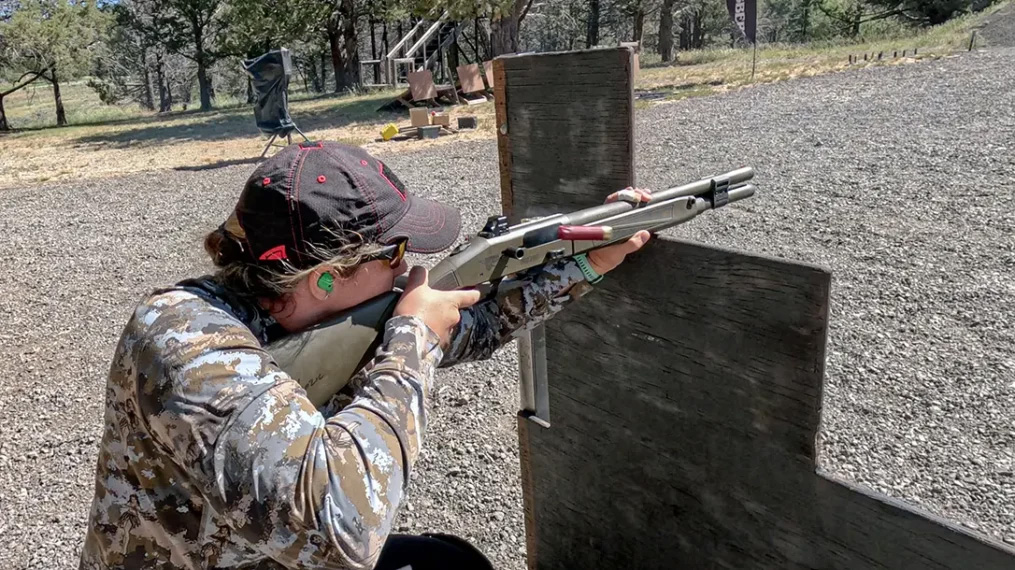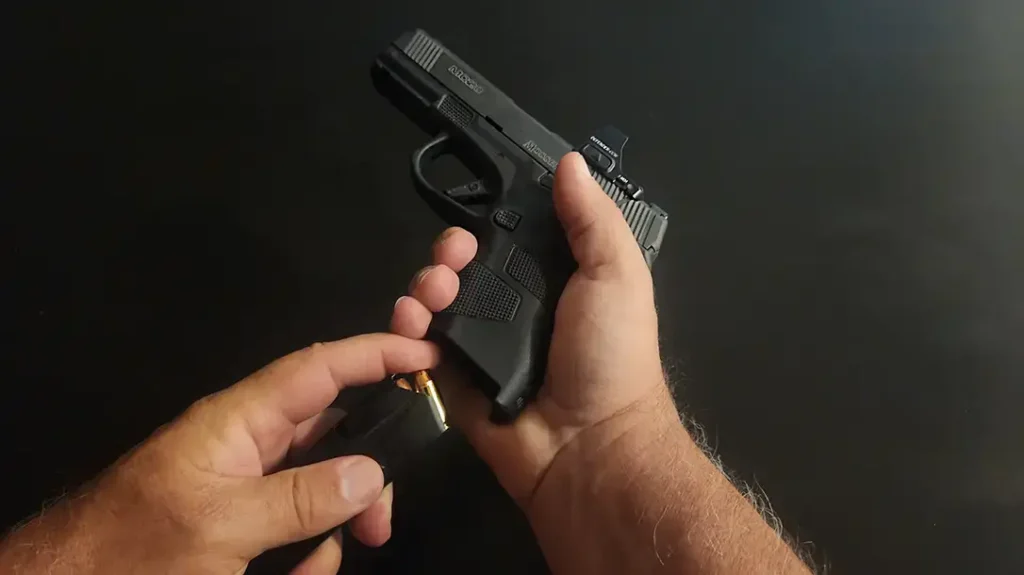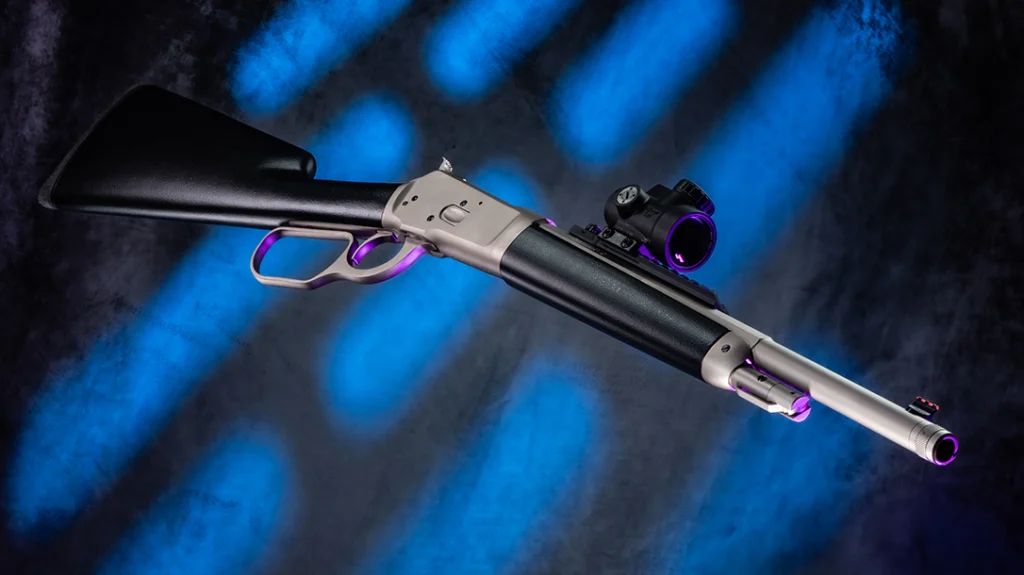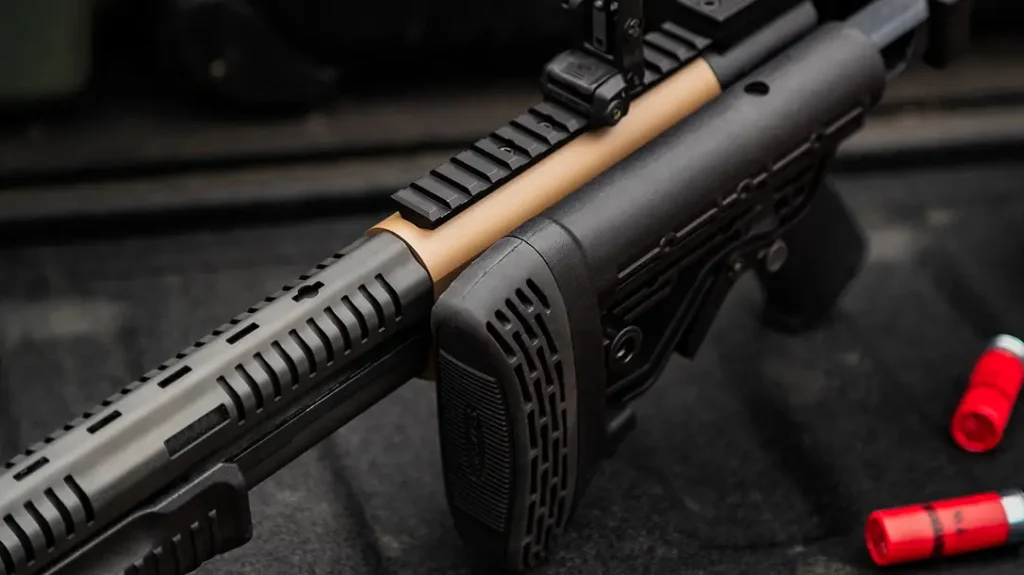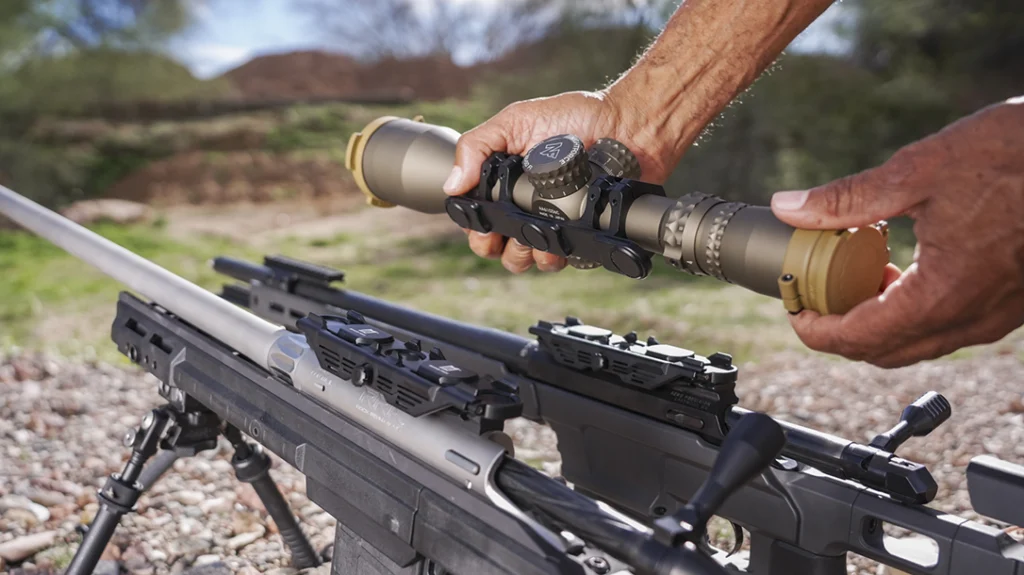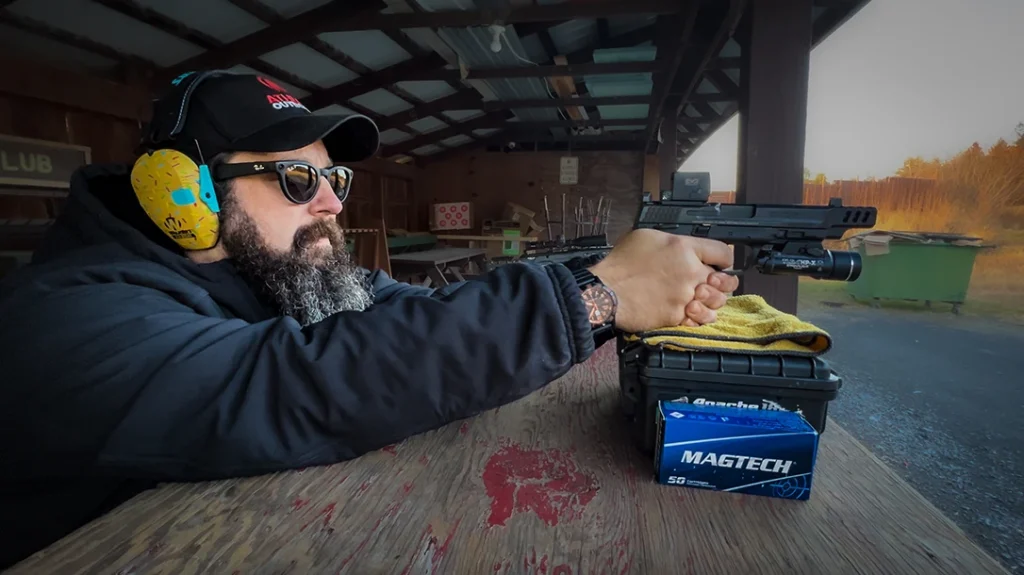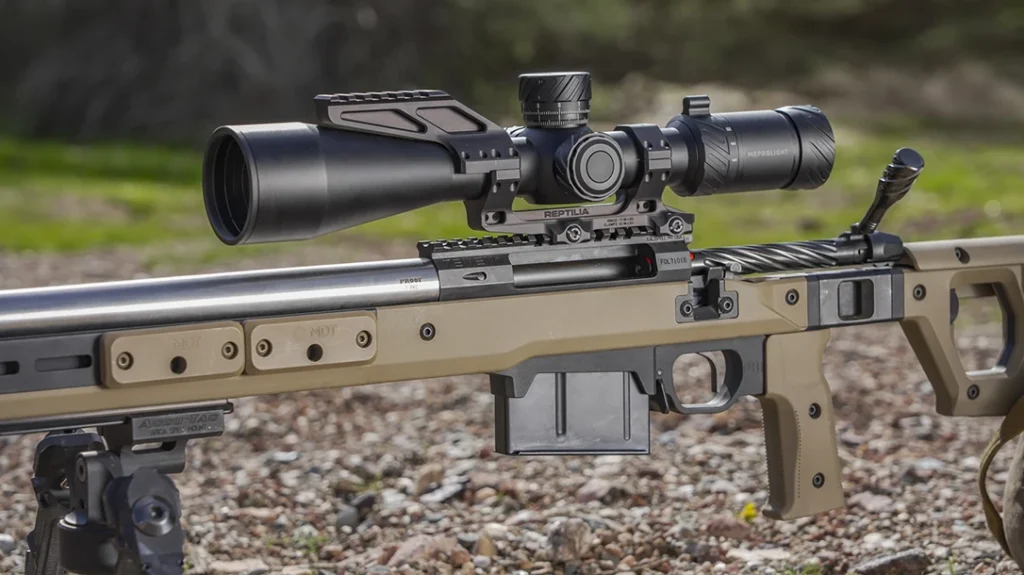If you have the opportunity and means to go to Thunder Ranch, go now. I recently attended a Defensive Shotgun Class sponsored by Mossberg at Thunder Ranch, and it was a class unlike any other. If you know the history of Gunsite Academy and Jeff Cooper, you’ve probably also heard of Clint Smith. Clint is a Marine Corps veteran of two infantry and combined action platoon tours in Vietnam. He served seven years as a police officer, was head of the Firearms Training Division, a S.W.A.T. member, and precision rifleman. Clint attended Gunsite classes starting in 1978, and in 1980, Jeff Cooper asked him to work full-time as an instructor and operations officer. Clint attributes Jeff Cooper and Gunsite as an inspiration for many firearms training schools we have today.
Thunder Ranch Defensive Shotgun Class
Clint Smith also served as Operations Officer for the American Pistol Institute. He founded International Training Consultants (ITC) in 1983, a mobile training program teaching Urban Rifle, Shotgun, Precision Rifle, and various handgun courses. In 1986, Clint became the Director of Training for Heckler & Koch, teaching fully automatic weapons and conventional weapon systems courses. It wasn’t until 1993 that Thunder Ranch opened, initially in Texas. In 2004, it moved to a beautiful 900-acre parcel of land in Oregon.
Heidi Smith, a powerhouse in her own right, is also a Founder of Thunder Ranch. Heidi and her mother saw a need in the 90s for an all-female format to introduce women to learning how to shoot and use handguns and rifles. She founded The Personal Safety Institute, a non-profit organization with an all-lady firearms training team. This organization operated and trained hundreds of ladies for seven years, empowering them with the skills and confidence to defend themselves.
Advertisement — Continue Reading Below
In 1992, Heidi became an adjunct instructor for ITC, and in 1995, she hired on as an instructor for Thunder Ranch. Then in 2009, she became an EMT for the State of Oregon and helped create the current Trauma Block taught at Thunder Ranch. In 2010, she swore in in as a Lake Country Sheriff’s Reserve deputy and is currently a TEMS medic for the Department. While at Thunder Ranch, I wanted to test Heidi’s medical skills and am happy to report she’s beyond prepared. (Thanks, Heidi!)

Defensive Shotgun Course
If you have met me or read any of my shotgun-related articles, you know I love shotguns. Most Americans own at least one, but do they know how to use it effectively or fight with it if need be? Shooting a shotgun is arguably easier than shooting rifles or pistols, but using one tactically is a different ball game.
Advertisement — Continue Reading Below
We ran Thunder Ranch Mossberg 940 Pro Tactical 12-gauge shotguns for this course, already topped off with Holosun 407K red dot optics. A requirement for the Defensive Shotgun course is to have a shotgun with a sling. The 940 Pro Tactical has QD sling mounting ports on the stock and forend. The barrel clamp pre-installed also has M-LOK mounting slots to attach additional sling mounting hardware. We then used Velcro backing, which you can buy at just about any fabric store, to set up a side saddle mount on the left side of the receiver. Finally, Spiritus Systems sent us their Fanny Sack to attach extra side saddles to the interior Velcro and store spare shells.
Most people get a new shotgun and immediately shoot clay targets or take it hunting without patterning, zeroing, or testing the ammunition they plan on using. What I loved about the Thunder Ranch experience was that the class started by seeing how birdshot patterned on paper. We then zeroed the Holosun optic for slugs and confirmed our shots with buckshot. Since we didn’t plan on changing chokes for the class, this was all we needed to do to get started.
The Cadre
Jack and Colton were our instructors, and between these two gentlemen, we learned a lot about what can go wrong, what will go wrong, and what we all need to work on. For most students in any shotgun course, the choke point is loading a shotgun quickly, under pressure, and without looking down at their shells or shotgun. I get a lot of hate from people who don’t shoot competitions and think shooting sports don’t teach practical skills or knowledge.
Advertisement — Continue Reading Below
Regarding this Defensive Shotgun course, my 3-Gun competition shooting skills paid off in multiple ways. I spent years dual and quad loading a shotgun, both strong- and weak-hand loading, and working with various shotgun caddies. Loading a shotgun quickly, using multiple ammunition sources, and under pressure with my head up were probably my greatest strengths in the class. 3-Gun forces competitors to shoot from unconventional shooting positions, occasionally making it difficult to shoulder the gun properly, causing a failure to eject or feed.

Practical Application
This course asked us to much of the same, shooting off various barricades from prone, shooting sideways behind rocks, forcing the occasional malfunction to clear. That test – passed.
Advertisement — Continue Reading Below
It’s great to see what you do well in a class, but paying attention to what you struggle with is way more important so you can take home that knowledge and improve your skills. What I learned I need to work on most is impacting my targets with 100% accuracy, getting my entire body behind cover, and shooting from behind more urban-style cover. We learned how to use a sling for stability when shooting long-range slugs and how to use it strategically to keep your face safe from hitting your optic when shooting in an awkward position. Just like working with a rifle sling more, I plan on spending time with my shotgun and sling to use these tools in unison.
The Drills
Thunder Ranch runs a fight school, so you better come prepared to get into a fight! Each day of class would build upon the last. We had to learn to crawl before we could walk or even run. The first order of business was learning how to work with and use the gear we were provided. Jack would run us through a drill to run the shotgun dry and perform an “administrative reload.”
You can use your left hand to push a shell out from the side saddle, use your right hand to roll the shotgun on its side, drop the shell into the empty chamber, use your left hand to reach under the loading port to hit the bolt release and fire the gun. If your side saddle is empty, the other option is to reach down to your Fanny Sack with your right hand, grab a shotshell, drop it in the empty chamber, hit the bolt release, get back on the trigger, and fire.
Advertisement — Continue Reading Below

Load, Load, Load
You should be constantly reloading when you’re not shooting or under threat. That’s essentially the mantra for shotgun shooting. The way you set your shells up in a side saddle is a personal preference and one you need to test out before using. Many of us kept all six rounds with the brass side up because we noticed that with enough recoil from firing the shotgun, the brass side down would cause the shells to fall out of the loops slowly. The shells’ orientation also depends on whether you plan to load the shotgun with your weak or strong hand, so you know which direction to push the shells out of the loops. Once a side saddle is emptied, you should always replace it with a fresh one from your Fanny Sack. Once again, ensure you mount it on the shotgun with the shells orientated in the correct direction.
We shot behind walls in drills to learn how to properly “lean to fight” to engage the target behind the wall while keeping our bodies as covered as possible by the wall. “Lean to fight” means leaning with your gun all in one smooth motion to shoot your target as soon as it appears behind cover or concealment. I tend to lead with my muzzle behind a wall and follow behind it, which is slower and can be picked up faster by the enemy. An eye-opening lesson for me was learning to switch the leg I’m leaning out on depending on what side of the wall I’m shooting from for the most cover.
Advertisement — Continue Reading Below

Shooting & Moving
Jack then ran us through a moving and shooting drill, with walls for cover set up as places to reload our guns. This drill demanded a lot from us to move forward while shooting, running to cover, shooting from behind cover without getting too tight to the wall, reloading our shotguns each chance we got, and then shooting while moving laterally or rearward. Finally, we got to shoot from a multi-positional barricade and learn how to become contortionists. This barricade is where I failed to get my body behind cover and realized I needed to work on keeping my left leg from being exposed.
One of the biggest lessons in fighting is not sticking your head up over cover, as that’s usually the quickest way to get shot. Instead, we learned to turn our shotgun on its side off the top of the barricade and shoot with our head sideways, as much behind cover as possible. These small things were big eye-openers for me as a civilian with zero law enforcement or military training or background.
Advertisement — Continue Reading Below

The Punisher
We were the first shotgun students to shoot The Punisher, and if you don’t know what that is, the name says it all. The Punisher is an urban playground built to learn how to fight from various places of cover you might find yourself in. The Punisher is outfitted with a telephone booth, rooftop, metal fence, concrete wall, wooden fence posts, stacked rocks, and even an old truck bed with a hole punched out of the tailgate to shoot out. Steel targets were littered downrange, and we had to master moving the shotgun in and out of tight positions, shooting the threats, engaging the safety and moving laterally to the next place of cover, shooting sideways on the ground behind rock cover, and shooting prone from the back of the truck bed.
The other challenge? With a capacity of 7+1 rounds in the Mossberg 940 Tactical shotgun, we had to keep loading the shotgun every chance we could. Every single one of us completed that drill winded but with a smile on our face.
Advertisement — Continue Reading Below

When Can I Move In?
There is so much more to Thunder Ranch that I hope to get back to experience. The Terminator is the most insanely complicated shoot house I have ever seen. It is a total Kobayashi Maru drill, no matter your skills or experience level. At the end of our course, we learned how to clear just a few rooms in The Terminator and shoot down one bad guy. Beyond firearms training, Thunder Ranch also teaches Medical Tactics and Handgun/Vehicle/Trauma, which I think every gun owner needs to think about learning if they carry a gun daily. We are more likely to need to use medical training than a gun in our lifetime.
Thunder Ranch prides itself on everything, from the cleanliness of the range to the completion certificates and pins they hand out to each student. You can hardly find spent brass, shotgun wads, or trash scrap on any ranges. Thank you to Mossberg for this once-in-a-lifetime experience and to Clint and Heidi for the hospitality. I plan to return for another course and wear my Thunder Ranch pin with pride!
